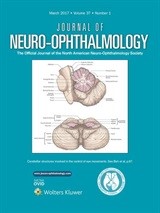Objective: Sports-related concussion commonly affects the visual pathways. Current sideline protocols test cognition and balance, but do not include assessments of visual performance. We investigated how adding a vision-based test of rapid number naming could increase our ability to identify concussed athletes on the sideline at youth and collegiate levels.
Methods: Participants in this prospective study included members of a youth ice hockey and lacrosse league and collegiate athletes from New York University (NYU) and Long Island University (LIU). Athletes underwent pre-season baseline assessments using 1) the King-Devick (K-D) test, a <2-minute visual performance measure of rapid number naming; 2) the Standardized Assessment of Concussion (SAC), a test of cognition; 3) a timed tandem-gait test of balance. The SAC and timed tandem-gait are components of the currently used Sport-Concussion Assessment Tool, 3rd Edition (SCAT3 and Child-SCAT3). In the event of a concussion during the athletic season, injured athletes were re-tested on the sideline/rink-side. Non-concussed athletes were also assessed as control participants under the same testing conditions.
Results: Among 243 youth (mean age 11±3 years, range 5-17) and 89 collegiate athletes (age 20±1 years, range 18-23), baseline time scores for the K-D test were lower (better) with increasing participant age (p<0.001, linear regression models). Among 12 athletes who sustained concussions during their athletic season, K-D scores worsened from baseline by an average of 5.2 seconds; improvement by 6.4 seconds was noted for the non-concussed controls (n=14). The vision-based K-D test showed the greatest capacity to distinguish concussed vs. control athletes based on changes from pre-season baseline to post-injury (ROC curve areas from logistic regression models, accounting for age=0.92 for K-D, 0.87 for timed tandem gait, and 0.68 for SAC; p=0.0004 for comparison of ROC curve areas).
Conclusion: Adding a vision-based performance measure to cognitive and balance testing enhances the detection capabilities of current sideline concussion assessment. This observation in mild traumatic brain injury patients reflects the common involvement and widespread distribution of the brain pathways dedicated to vision.
Summary Points:
- The K-D test was validated in ages as young as 5.
- K-D Sensitivity = 75%, K-D Specificity = 93%.
- K-D shows the greatest capacity to distinguish concussed vs. non-concussed control groups based on changes from preseason baseline ROC curve areas.
- Athletic trainers had a 92% probability of correctly distinguishing a concussed vs. non-concussed athletes based on the result of the K-D test alone (ROC curve areas from logistic regression models, accounting for age were K-D = 0.92, timed tandem gait = 0.87, and SAC = 0.68).
- The K-D test is a useful tool to aid in the diagnosis of concussed athletes at all levels of sport.
- Preseason baseline scores add to the simplicity and relevance of the K-D test in youth athletes and obviate the need for parents or others on the sideline to determine normative values in the acute setting of an injury.
The combination of timed tandem gait, SAC and K-D resulted in a 97% ROC curve area.

